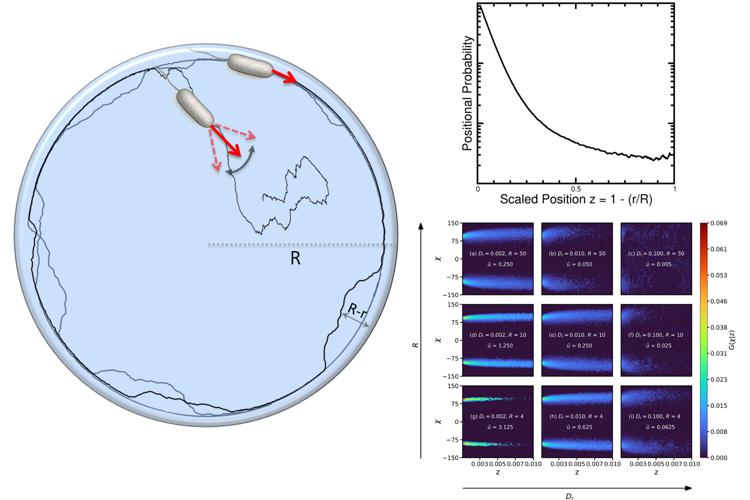- Imprimer
- Partager
- Partager sur Facebook
- Partager sur X
- Partager sur LinkedIn
Séminaire
Le 27 octobre 2025

Vishwas Vasisht (IIT Palakkad, India)
Active systems are self-driven entities spanning a wide range of length scales, from microscopic units (e.g., cells and bacteria) to macroscopic organisms (e.g., fish and birds). They display rich interfacial dynamics, including boundary accumulation and clustering, which can lead to phenomena such as motility-induced phase separation and biofilm formation. Although active systems modeled as active Brownian particles (ABPs) have been extensively studied near boundaries and interfaces, the positional and orientational statistics remains poorly understood. In this talk I will present our simulation results of an ABP in circular confinement that shows that its positional distribution — from the boundary toward the interior — follows a bi-exponential profile. Near the boundary, it decays rapidly, transitions to a slower decay, and eventually becomes uniform further inside. The decay length scales depend on the confinement radius: the smaller scale is primarily controlled by translational diffusion, while the larger scale is set by rotational diffusivity and self-propulsion. These behaviors are captured by two dimensionless parameters that explicitly incorporate the confinement radius. These findings from simulations are further supported by Fokker–Planck calculations and experiments with a single bacterium confined within a vesicle. If time allows, I will discuss the orientational distribution, showing how ABPs align along the boundary or radially outward, with relevance to the escape problem.
Contact: Kirsten Martens
Date
11:00
Localisation
LIPhy, salle de conférence
- Imprimer
- Partager
- Partager sur Facebook
- Partager sur X
- Partager sur LinkedIn